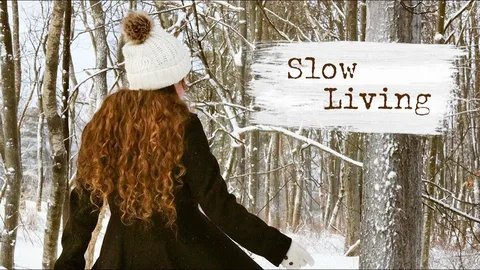In today’s digitally connected, fast-paced world, it’s easy to feel overwhelmed. From endless to-do lists to constant social media notifications, we often find ourselves caught in a cycle of doing more but enjoying less. Amid this chaos, a quiet and conscious lifestyle shift is gaining popularity — slow living.
This movement is not about escaping responsibilities or abandoning ambition. Instead, it’s about reclaiming balance, reducing unnecessary noise, and choosing to live each moment with purpose. Slow living invites us to step back from the frenzy and ask: What really matters?
Table of Contents
What Slow Living Really Means
At its core, slow living is a mindset — one that values quality, presence, and simplicity. It challenges the modern obsession with speed and productivity by encouraging us to slow down, focus on what truly enriches our lives, and let go of the superficial rush.
This doesn’t mean you stop working hard or striving for growth. Rather, slow living helps you live in alignment with your values. Whether it’s how you start your morning, cook your meals, spend your weekends, or use technology, the aim is to bring more mindfulness and intention into everyday actions.
For example, choosing a calm morning routine instead of waking up to urgent emails can set the tone for a more grounded day. Eating meals slowly, without distractions, helps foster gratitude and improves digestion. These seemingly small shifts, when practiced consistently, can lead to a more fulfilling lifestyle.
Why More People Are Choosing to Slow Down
Burnout, digital fatigue, and emotional exhaustion have become widespread, especially in the post-pandemic world. In response, many people are turning toward slow living to escape the constant pressure to perform, consume, and stay “plugged in.”
Here are a few reasons why this lifestyle is gaining momentum:
- Mental clarity: Slowing down helps declutter your thoughts and reduce anxiety.
- Improved well-being: A slower pace allows for better self-care, sleep, and emotional balance.
- Deeper connections: You can be fully present with friends and family, leading to more meaningful relationships.
- Intentional living: You begin to live life by design, not by default.
More people are realizing that a successful life isn’t necessarily a busy one. It’s one filled with presence, purpose, and peace — the very things slow living offers.
How to Practice Slow Living in Daily Life
Adopting a slow living lifestyle doesn’t require a dramatic overhaul. It starts with small, intentional changes that gradually shift your mindset and habits.
Here are a few practical ways to get started:
- Simplify your schedule: Prioritize what matters and say no to non-essential commitments. Give yourself breathing room.
- Unplug regularly: Designate screen-free times during your day, especially in the morning and before bed.
- Cook and eat mindfully: Instead of rushing through meals, savor the process — from preparation to the last bite.
- Buy less, choose well: Focus on meaningful purchases that add value rather than clutter.
- Embrace nature: Spend time outdoors without distractions. Nature naturally encourages slowness and reflection.
- Do one thing at a time: Multitasking creates stress. Single-tasking fosters calm and better results.
The beauty of these changes is that they don’t demand perfection. Even a few mindful minutes a day can shift your energy and bring a sense of control back to your life.
The Beauty of a Slower Life
When you intentionally slow down, you start noticing things you used to overlook — the warmth of sunlight, the texture of your food, the way your child laughs, or how silence feels after a long day. These moments, often lost in the rush, are where life’s true richness resides.
Slow living is not about stepping away from modern life; it’s about stepping into it more fully. It’s about aligning with what fulfills you, rather than chasing what exhausts you. Whether you’re a working professional, a parent, a student, or a creative soul, this lifestyle can be adapted in ways that suit your reality.
By choosing a slower path, you give yourself permission to be more present, more creative, and more content. In a world that glorifies busy, choosing peace might just be the boldest act of all.

